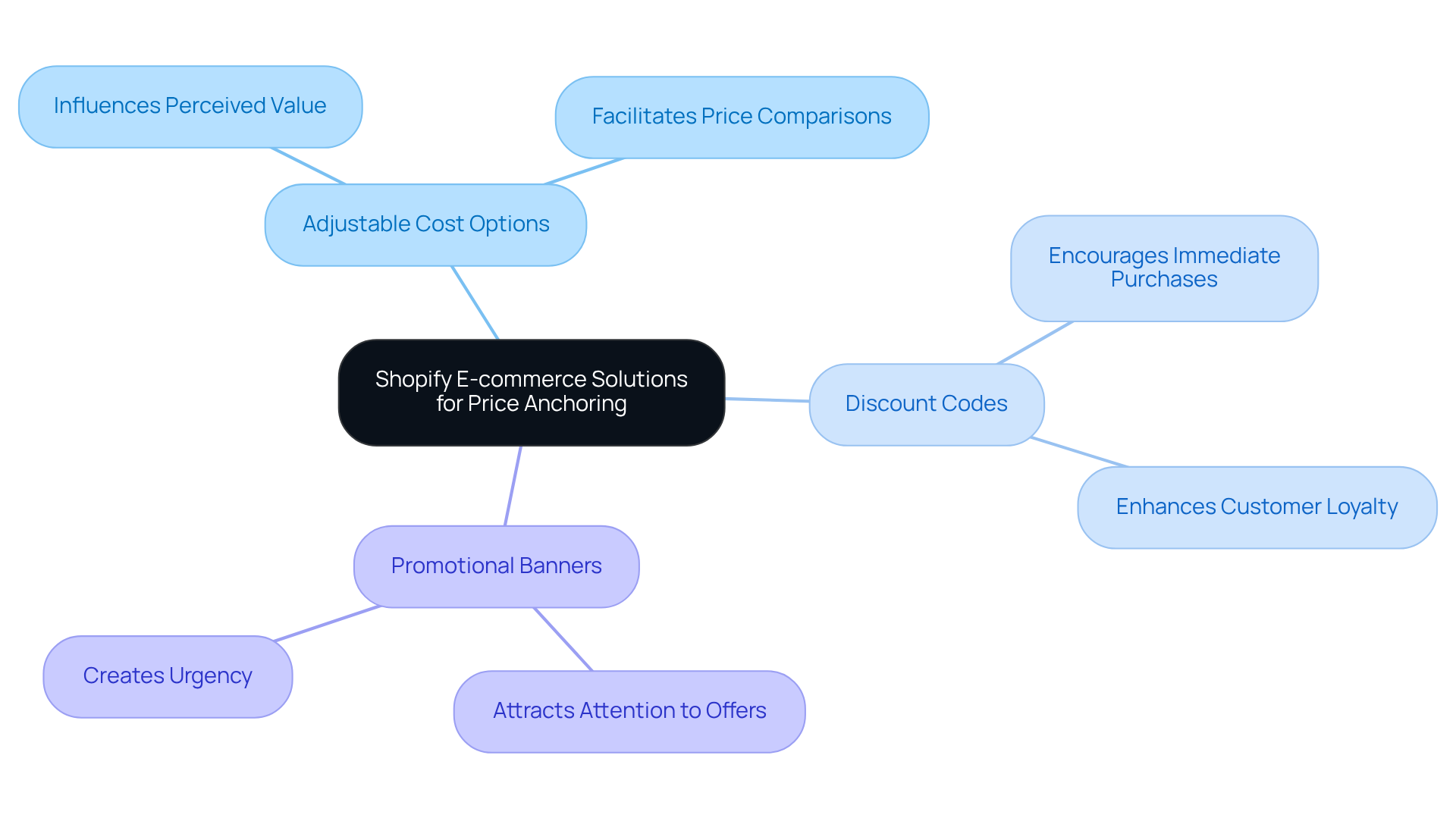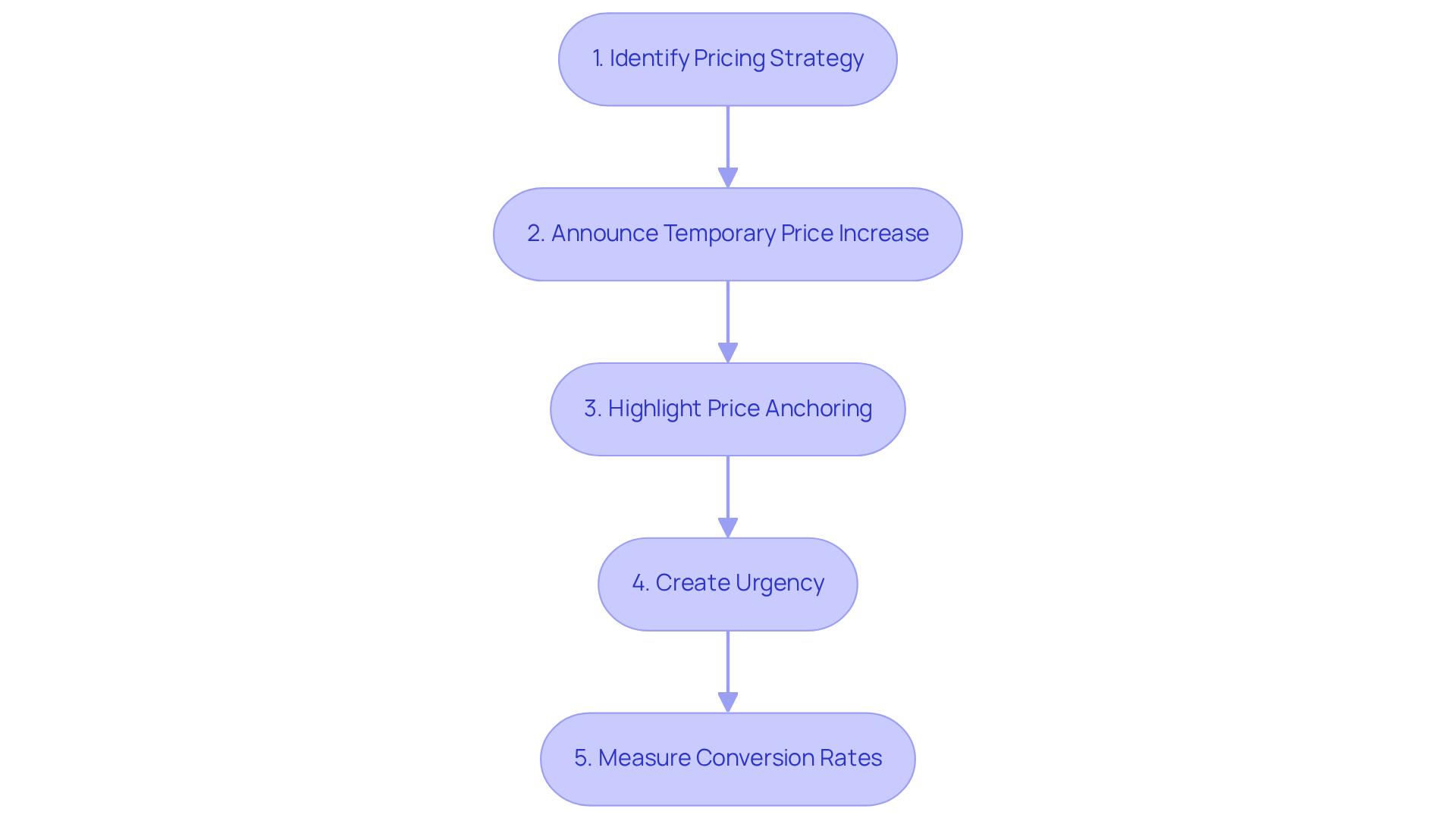
Overview
This article delves into effective price anchoring strategies for direct-to-consumer (DTC) brands, presenting various techniques that significantly enhance perceived value and drive conversion rates. By detailing practical methods such as:
- Tiered pricing structures
- Charm pricing
- The strategic use of social proof
it illustrates how well-crafted pricing strategies can profoundly influence consumer behavior and lead to increased sales. Understanding these techniques is essential for DTC brands aiming to optimize their pricing strategies and maximize their market impact.
Introduction
Price anchoring stands as a pivotal strategy for direct-to-consumer (DTC) brands intent on enhancing their market presence and driving sales. By strategically positioning prices to create perceived value, these companies can significantly influence consumer behavior and boost conversion rates.
However, the implementation of these techniques poses challenges; brands must navigate the complexities of consumer psychology without overwhelming potential buyers or succumbing to common pitfalls.
What are the most effective price anchoring strategies that DTC brands can adopt to attract customers and cultivate long-term loyalty?
Parah Group: Comprehensive Conversion Rate Optimization Services for Price Anchoring
Parah Group delivers a suite of services essential for implementing effective price anchoring. Their user session recordings yield valuable insights into consumer behavior, while competitor analysis empowers companies to grasp their market positioning. Through conversion copywriting and UI/UX design, pricing strategies are articulated clearly with price anchoring, thereby enhancing perceived value. Additionally, ongoing A/B testing enables continuous optimization of price points by utilizing price anchoring, allowing companies to adapt to consumer responses and maximize conversion rates effectively.
For example, a $30M apparel company collaborated with Parah Group to tackle low conversion rates. By redesigning their homepage to highlight social proof, gamifying the progress bar for free shipping thresholds, and refining product pricing, they realized a 35% increase in conversion rates. Similarly, Grab Green, a $15M cleaning product company, executed strategic cost tests, introduced bundles and multi-packs, and offered free gifts on orders exceeding a specific cart size, resulting in an 80% boost in average order value (AOV). These transformative case studies exemplify how Parah Group's innovative Conversion Rate Optimization (CRO) strategies can drive revenue growth and enhance profitability for direct-to-consumer (DTC) enterprises.

Salesforce: Revenue Lifecycle Management for Effective Price Anchoring
Salesforce provides robust revenue lifecycle management tools that empower DTC companies to meticulously monitor customer interactions and refine their pricing strategies over time. By leveraging consumer data, these companies can identify the most effective cost levels and adjust their positioning strategies accordingly. This data-driven approach ensures that businesses can swiftly adapt to market fluctuations and evolving consumer preferences, thereby enhancing the effectiveness of their anchoring efforts.

Shopify: E-commerce Solutions for Implementing Price Anchoring
Shopify offers a robust suite of e-commerce solutions that enable direct-to-consumer (DTC) companies to effectively implement price anchoring strategies. Key features, such as:
- Adjustable cost options
- Discount codes
- Promotional banners
enable businesses to strategically position higher-priced items alongside discounted alternatives. This method not only shapes consumer perception through price anchoring but also markedly boosts conversion rates. By leveraging these tools, DTC companies can craft compelling offers that resonate with price-sensitive consumers, ultimately driving sales and cultivating customer loyalty.

Talon.One: Pricing Engine for Strategic Price Anchoring
Talon.One presents a powerful cost management system designed specifically for DTC companies, enabling them to automate their anchoring strategies with precision. By establishing clear guidelines for cost modifications that respond to customer behavior and market trends, brands can ensure that their price anchoring remains both relevant and impactful. This strategic approach not only conserves valuable time but also enhances the overall customer experience by providing clear and compelling cost options that resonate with consumers.

Charm Pricing: Leveraging Psychological Pricing Techniques in Price Anchoring
Charm strategies, which involve establishing costs just below a round figure (e.g., $19.99 instead of $20), can significantly enhance price anchoring. This technique plays on consumer psychology, making prices appear more attractive and leading to higher conversion rates.
At Parah Group, we employ this psychological value-setting technique as a core component of our comprehensive Conversion Rate Optimization (CRO) approaches. These approaches encompass:
- A/B testing
- User experience improvements
- Focused messaging
By integrating charm strategies with these established methods, we utilize price anchoring to create a perception of value that encourages purchases. Our transformational case studies illustrate how DTC brands have effectively executed these strategies, leading to a 35% rise in conversion rates for one apparel brand after enhancing their cost approach alongside other CRO tactics.
To maximize the effectiveness of charm strategies, it is advisable to test various cost levels and observe their influence on conversion rates.

Tiered Pricing Structures: Enhancing Perceived Value through Price Anchoring
Tiered pricing structures represent a strategic approach that involves offering multiple pricing options for a product or service, each accompanied by distinct features or benefits. This strategy not only increases perceived value but also utilizes price anchoring to provide consumers with clear options.
For instance, a direct-to-consumer (DTC) company may present a basic, standard, and premium version of a product, utilizing the premium option as a compelling example of price anchoring. Such a structure not only encourages upselling but also instills a sense of enhanced value for consumers, making them feel they are receiving more for their investment.

Temporary Price Increases: Creating Urgency with Price Anchoring
Implementing temporary cost increases creates a sense of urgency among consumers, prompting quicker purchasing decisions. By announcing imminent price increases, DTC companies effectively use price anchoring to compare current prices with the anticipated higher rates. This strategy leverages price anchoring to drive immediate sales, as consumers are motivated to act swiftly to avoid paying more later, while also enhancing the perceived value of the product.
For instance, our case studies reveal that companies have experienced significant revenue growth through strategic pricing adjustments, including a 35% increase in conversion rates after employing urgency-driven pricing tactics.
Our five-step process emphasizes the utilization of consumer psychology to optimize profitability, ensuring that DTC companies can enhance their profitability and foster sustainable growth.

Luxury Goods as Price Anchors: Elevating Perceived Value in DTC Marketing
Luxury goods function as effective price anchoring tools in direct-to-consumer (DTC) marketing. By strategically positioning high-end products alongside more affordable options, companies can significantly elevate the perceived value of their entire product range. This powerful strategy not only attracts affluent consumers but also influences the purchasing decisions of budget-conscious shoppers. The latter group may perceive the lower-priced items as more valuable because of price anchoring compared to the luxury items, thereby enhancing overall sales and brand perception.

Limitations of Price Anchoring: Recognizing When It Fails for DTC Brands
Price anchoring has a significant impact on consumer behavior; however, DTC brands must stay aware of its limitations. Ineffective price anchoring occurs when consumers perceive the anchor as irrelevant or when the cost difference is too minimal to sway their purchasing decisions. This situation can foster skepticism, as consumers may question the authenticity of the pricing strategy.
For instance, if a company employs price anchoring by setting a high reference cost but offers only a minor reduction, it may struggle to present a compelling value proposition. To combat this, brands should actively test and refine their anchoring strategies, ensuring they resonate with their target audience and adapt to shifting consumer perceptions. Continuous evaluation is crucial to sustain effectiveness and relevance in a competitive marketplace.

Five Tips for Effective Price Anchoring: Practical Strategies for DTC Brands
-
Utilize distinct comparisons: Price anchoring by displaying cost anchors alongside the actual amount is essential to emphasize perceived savings. This transparency fosters trust and encourages purchasing decisions, as customers value clarity regarding what they are paying for, free from hidden fees. By aligning your pricing strategy with a comprehensive CRO approach, you can maximize the effectiveness of these comparisons, leveraging CRO as a high ROI marketing lever.
-
Test Different Price Anchoring: Experimenting with various cost points is crucial to determine which price anchoring strategies resonate best with your audience. A/B testing reveals consumer preferences, allowing for data-driven adjustments that optimize conversion rates. Notably, amounts ending in .99 can significantly influence customer perception, leading them to believe they are receiving a better offer. This rigorous testing forms a cornerstone of effective CRO strategies employed by Parah Group to enhance profitability.
-
Leverage Social Proof: Showcasing customer testimonials or reviews reinforces the value of your products concerning price anchoring. The impact of online reviews on cost perceptions is substantial; potential buyers are more inclined to trust products with positive feedback from others, thereby enhancing perceived value. Incorporating social proof into your pricing approach can significantly boost conversion rates.
-
Create Scarcity: Employ limited-time offers to heighten the urgency of your value anchors, encouraging quicker purchasing decisions. Scarcity motivates customers to act swiftly, driven by the fear of missing out on a good deal. This tactic aligns with the high-velocity testing approach advocated by Parah Group for maximizing growth.
-
Monitor Consumer Behavior: Utilize analytics tools to track consumer responses to your strategies involving price anchoring and adjust accordingly. Analyzing this data allows you to refine your approach, ensuring competitive and appealing pricing for your target market. This ongoing analysis is crucial for maintaining alignment between your paid ads and landing pages, ultimately driving significant growth.

Conclusion
Implementing effective price anchoring strategies is essential for direct-to-consumer (DTC) brands aiming to enhance their market presence and drive sales. By grasping the psychological underpinnings of consumer behavior and employing various pricing techniques, businesses can significantly influence purchasing decisions and elevate conversion rates.
This article underscores several key strategies, including:
- The utilization of charm pricing
- Tiered pricing structures
- The establishment of urgency through temporary price increases
Moreover, leveraging analytics and social proof can further amplify the effectiveness of these strategies. Case studies illustrate the tangible benefits of these approaches, with companies realizing substantial increases in conversion rates and average order values.
Ultimately, the importance of price anchoring cannot be overstated. DTC brands must consistently refine their pricing strategies to adapt to evolving consumer perceptions and market dynamics. By embracing innovative pricing techniques and committing to data-driven adjustments, brands can not only enhance their perceived value but also cultivate long-term customer loyalty and sustainable growth.
Frequently Asked Questions
What services does Parah Group offer for price anchoring?
Parah Group offers user session recordings, competitor analysis, conversion copywriting, UI/UX design, and ongoing A/B testing to implement effective price anchoring strategies.
How does Parah Group enhance perceived value through price anchoring?
They articulate pricing strategies clearly with price anchoring, which helps enhance perceived value by positioning products effectively in the market.
Can you provide an example of a successful case study involving Parah Group?
A $30M apparel company worked with Parah Group to redesign their homepage, highlight social proof, gamify the free shipping threshold, and refine product pricing, resulting in a 35% increase in conversion rates.
What impact did Parah Group have on Grab Green's sales?
Grab Green, a $15M cleaning product company, implemented strategic cost tests, introduced bundles and multi-packs, and offered free gifts for larger orders, leading to an 80% boost in average order value (AOV).
What tools does Salesforce provide for revenue lifecycle management?
Salesforce offers tools that allow DTC companies to monitor customer interactions and refine pricing strategies over time using consumer data.
How does Salesforce help companies adapt their pricing strategies?
By leveraging consumer data, companies can identify effective cost levels and adjust their positioning strategies, enabling them to adapt to market fluctuations and changing consumer preferences.
What e-commerce solutions does Shopify provide for price anchoring?
Shopify offers adjustable cost options, discount codes, and promotional banners that help DTC companies implement price anchoring strategies effectively.
How does price anchoring affect consumer perception on Shopify?
By positioning higher-priced items alongside discounted alternatives, Shopify helps shape consumer perception and significantly boosts conversion rates.
FAQs











